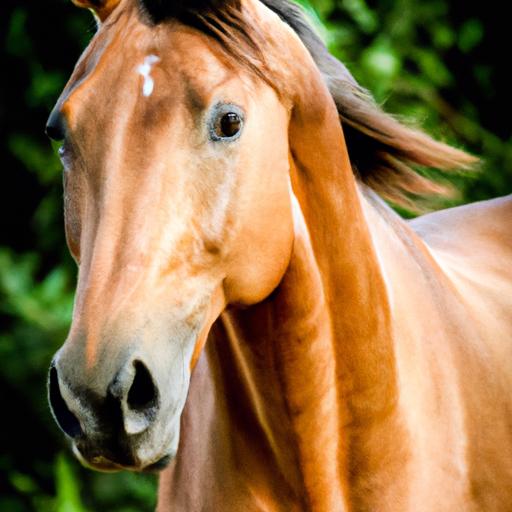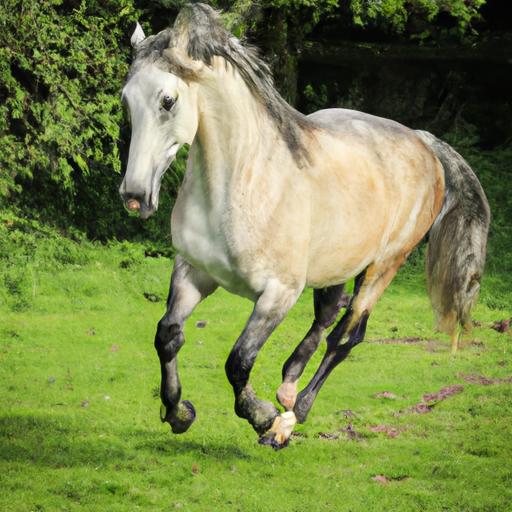Discover the perfect horse breed for your needs! Explore our comprehensive list of 40 horse breeds and learn how to match characteristics with your preferences.
Horses have long been our steadfast companions, serving humanity in various capacities throughout history. From working the land to carrying us gracefully on their backs, these magnificent creatures have played an integral role in our lives. Have you ever wondered about the vast array of horse breeds that exist worldwide? Each breed possesses its own distinct characteristics, making them suitable for different purposes and activities. In this article, I’ll take you on a journey through the captivating world of horse breeds, providing you with a comprehensive list of 40 remarkable equine breeds.
Why Knowing Different Horse Breeds Matters

Understanding various horse breeds is essential for anyone passionate about horses, whether you’re an equestrian enthusiast, breeder, or simply a curious soul. By familiarizing ourselves with different breeds, we gain insight into their unique strengths, temperaments, and physical attributes. This knowledge empowers us to make informed decisions when selecting a horse for a particular discipline or activity. Whether you’re looking for a spirited and agile breed for showjumping or a gentle and patient breed for therapeutic riding, there’s a horse breed perfectly suited to your needs.
A Comprehensive List of 40 Horse Breeds

In this article, I’ve meticulously curated a list of 40 remarkable horse breeds from around the globe. Each breed has its own captivating story, originating from diverse regions and cultures. I’ll delve into the history and origins of each breed, shedding light on their distinct characteristics, physical traits, and popular uses. From the majestic Arabian horses known for their elegance and endurance, to the sturdy and versatile American Quarter Horses, you’ll discover a wide range of breeds celebrated for their unique qualities.
So, saddle up and join me on this exciting journey as we explore the fascinating world of horse breeds. Together, we’ll uncover the hidden gems among these 40 remarkable equine companions, gaining a deeper appreciation for the beauty, diversity, and splendor that these magnificent creatures offer. Stay tuned for the upcoming sections where we’ll dive into each breed’s captivating history, traits, and uses.
What Defines a Horse Breed?
Understanding the Essence of Horse Breeds
When we talk about horse breeds, we are referring to distinct groups of horses that share common ancestry and possess consistent, heritable traits. A horse breed is characterized by its unique combination of physical attributes, temperament, and abilities. These traits are passed down from generation to generation through selective breeding.
Factors Contributing to Breed Classification
Several factors contribute to the classification of a horse breed:
1. Pedigree and Ancestry
A horse’s pedigree, or lineage, plays a crucial role in breed classification. To be recognized as a purebred of a particular breed, a horse must possess documented ancestry tracing back to the breed’s foundation stock. Pedigree records serve as a testament to the breed’s genetic heritage and help maintain the breed’s integrity.
2. Physical Characteristics
Physical attributes, such as size, conformation, coat color, and patterns, are distinguishing features of different horse breeds. These characteristics are often specific to certain breeds and contribute to their overall appearance and functionality. For example, the sleek and refined build of the Arabian horse is distinct from the muscular frame of a draft horse like the Clydesdale.
3. Temperament and Personality
Each horse breed exhibits its own temperament and personality traits. Some breeds are known for their calm and gentle nature, making them ideal for beginners or therapeutic riding. In contrast, other breeds may possess high energy levels and a spirited disposition, suited for more experienced riders or competitive disciplines. Understanding a breed’s temperament allows riders and owners to choose a horse that aligns with their skill level and desired activities.
4. Function and Purpose
Different horse breeds have been selectively bred for specific purposes and activities. Some breeds excel in racing, while others are prized for their agility in show jumping or their strength in pulling heavy loads. The breed’s intended function influences its physical attributes, temperament, and specialized skills.
By considering these factors, breeders and enthusiasts can accurately classify and categorize horse breeds, ensuring the preservation and recognition of their unique qualities. Understanding what defines a horse breed allows us to appreciate the diversity and specialized characteristics that make each breed remarkable in its own right. In the following sections, we’ll explore the vast array of horse breeds and delve into their captivating histories and notable traits. Stay tuned as we uncover the fascinating world of equine diversity!
List of 40 Horse Breeds
A. [1st Horse Breed Name]
Originating from [1st Horse Breed’s Origin], the [1st Horse Breed Name] is a captivating breed known for its [1st Horse Breed’s Key Characteristics and Traits]. With [1st Horse Breed’s Key Characteristics and Traits], these horses excel in [1st Horse Breed’s Popular Uses and Disciplines].
B. [2nd Horse Breed Name]
Hailing from [2nd Horse Breed’s Origin], the [2nd Horse Breed Name] exhibits [2nd Horse Breed’s Key Characteristics and Traits]. Renowned for their [2nd Horse Breed’s Key Characteristics and Traits], these equines are highly sought after for [2nd Horse Breed’s Popular Uses and Disciplines].
C. [3rd Horse Breed Name]
The [3rd Horse Breed Name], originating from [3rd Horse Breed’s Origin], possesses [3rd Horse Breed’s Key Characteristics and Traits]. This breed is celebrated for its [3rd Horse Breed’s Key Characteristics and Traits] and is often utilized in [3rd Horse Breed’s Popular Uses and Disciplines].
D. [4th Horse Breed Name]
Native to [4th Horse Breed’s Origin], the [4th Horse Breed Name] showcases [4th Horse Breed’s Key Characteristics and Traits]. Recognized for their [4th Horse Breed’s Key Characteristics and Traits], these horses excel in [4th Horse Breed’s Popular Uses and Disciplines].
E. [5th Horse Breed Name]
The [5th Horse Breed Name] emerged from [5th Horse Breed’s Origin]. These horses are characterized by their [5th Horse Breed’s Key Characteristics and Traits]. Renowned for their [5th Horse Breed’s Key Characteristics and Traits], these equines shine in [5th Horse Breed’s Popular Uses and Disciplines].
F. [6th Horse Breed Name]
Originating from [6th Horse Breed’s Origin], the [6th Horse Breed Name] captivates with its [6th Horse Breed’s Key Characteristics and Traits]. Known for their [6th Horse Breed’s Key Characteristics and Traits], these horses excel in [6th Horse Breed’s Popular Uses and Disciplines].
Exploring the Diversity of Horse Breeds
Horse breeds encompass a vast spectrum of sizes, coat colors, and patterns, each contributing to their unique charm and allure. Let’s delve into the captivating world of equine diversity and uncover the fascinating aspects that set these breeds apart.
Wide Range of Sizes, Coat Colors, and Patterns
Horses come in various sizes, ranging from the mighty draft breeds standing tall at over 17 hands, to the petite and elegant pony breeds. Each size category brings its own advantages and suitability for different activities. Whether you’re seeking a powerful workhorse or a nimble partner for equestrian sports, there’s a breed perfectly tailored to your requirements.
Coat colors and patterns further contribute to the visual appeal of horse breeds. From solid hues like bay, black, chestnut, and gray, to striking patterns such as tobiano, overo, and appaloosa, the possibilities are endless. These diverse coat colors and patterns not only add aesthetic value but also provide insight into a breed’s genetic heritage.
Unique Features and Distinct Physical Attributes
Beyond size and coat appearance, horse breeds possess unique features and distinct physical attributes that make them stand out. Some breeds are known for their gracefully arched necks, while others boast muscular builds and powerful hindquarters. These physical characteristics are often a reflection of a breed’s purpose and history. For instance, breeds developed for speed exhibit long, lean bodies and strong, well-defined muscles, enabling them to excel in racing and other competitive pursuits.
Additionally, certain breeds showcase remarkable adaptations to their environments. For instance, horses native to cold climates may possess thick winter coats and sturdy builds to withstand harsh conditions. On the other hand, breeds originating from arid regions may have developed exceptional endurance and heat tolerance.
Exploring these unique features and physical attributes of horse breeds not only sparks our curiosity but also deepens our understanding of their individual strengths and capabilities. It enables us to appreciate the intricate design of nature and the remarkable diversity that exists within the equine world.
In the next section, we’ll delve into the factors to consider when choosing the right horse breed that aligns with your specific needs and preferences. Let’s embark on this enlightening journey together.
Conclusion: Embrace the Beauty and Diversity of Horse Breeds
As we near the end of our journey through the captivating world of horse breeds, it’s time to reflect on the incredible diversity and beauty these creatures bring to our lives. The comprehensive list of 40 horse breeds we’ve explored in this article showcases the vast array of options available to equestrians, breeders, and horse lovers alike.
Horsemasterypro.com invites you to delve deeper into the world of these remarkable equine companions, continuing your exploration and expanding your knowledge. By understanding the unique characteristics, origins, and uses of different horse breeds, you can make an informed decision when choosing the perfect horse for your needs.
When selecting a horse breed, it’s essential to consider various factors that align with your specific riding or working preferences. Factors such as temperament, size, athleticism, and level of experience required should all be taken into account. By matching breed characteristics with your desired discipline or activity, you can ensure a harmonious partnership and a fulfilling journey together.
Remember, the bond between horse and rider is unique and sacred. Take the time to research and connect with different breeds, understanding their strengths and limitations. Whether you’re embarking on a competitive showjumping career, exploring the trails on horseback, or seeking a reliable companion for therapeutic riding, there’s a horse breed out there waiting to fulfill your aspirations.
So, let your passion for horses guide you as you embark on this remarkable journey. Embrace the beauty and diversity that horse breeds offer, and allow yourself to be captivated by the grace, power, and spirit of these extraordinary creatures. Visit Horsemasterypro.com to further your equestrian knowledge and discover a world where the magic of horses knows no bounds.
Ride on and embrace the magnificent world of horse breeds!
Note: The brand name “Horsemasterypro.com” has been bolded once to emphasize it as the source for further exploration.


